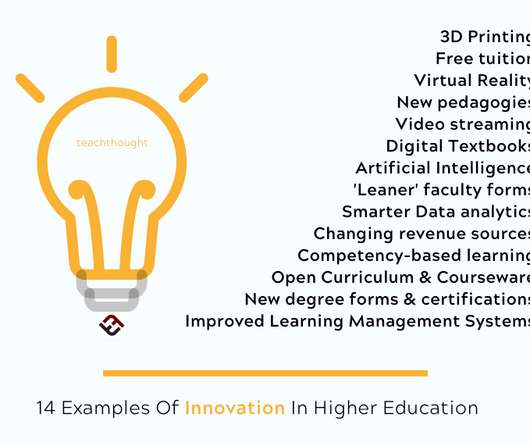14 Examples Of Innovation In Higher Education
TeachThought - Learn better.
MAY 12, 2020
Also note, the point of this post isn’t to showcase how innovative higher education is but rather to point out innovations that are out there as a kind of survey while also hopefully helping pollinate the possibility of innovation in the upper end of the field and ‘industry’ of education. Open Curriculum.


































Let's personalize your content